Several methods include securing a timber post to a solid poured concrete pier, slab, or foundation. A flat piece of plate steel with rebar fingers is embedded into the concrete with a welded steel knife plate to the timber post. Then, the elevated post base is attached to the timber post through a knife plate, which is held together with a steel pin and a couple of pegs to hide everything. After installing the frame, you weld the steel plate to the bottom of the knife plate post base, joining everything together.
Shopping Cart
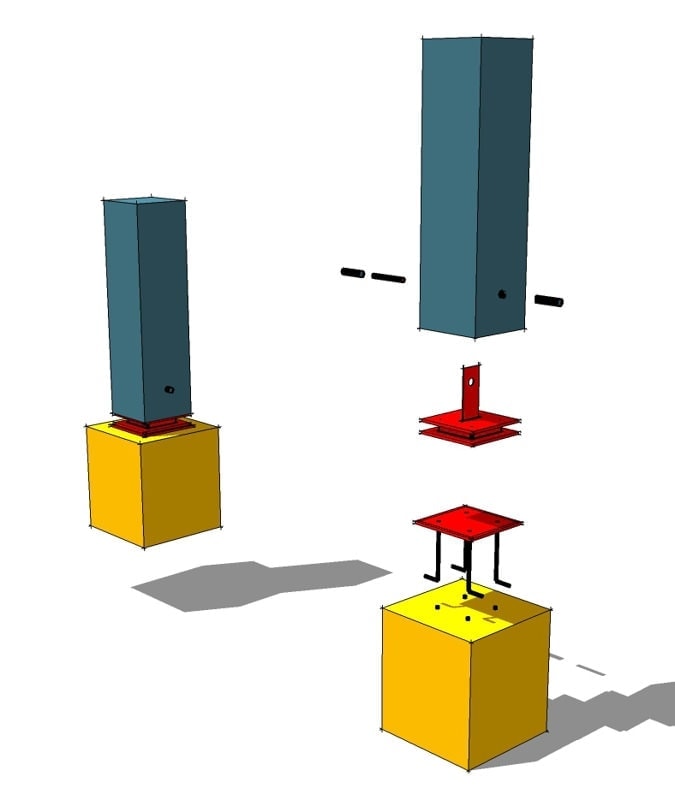
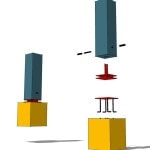
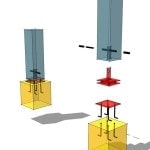
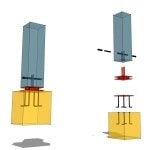
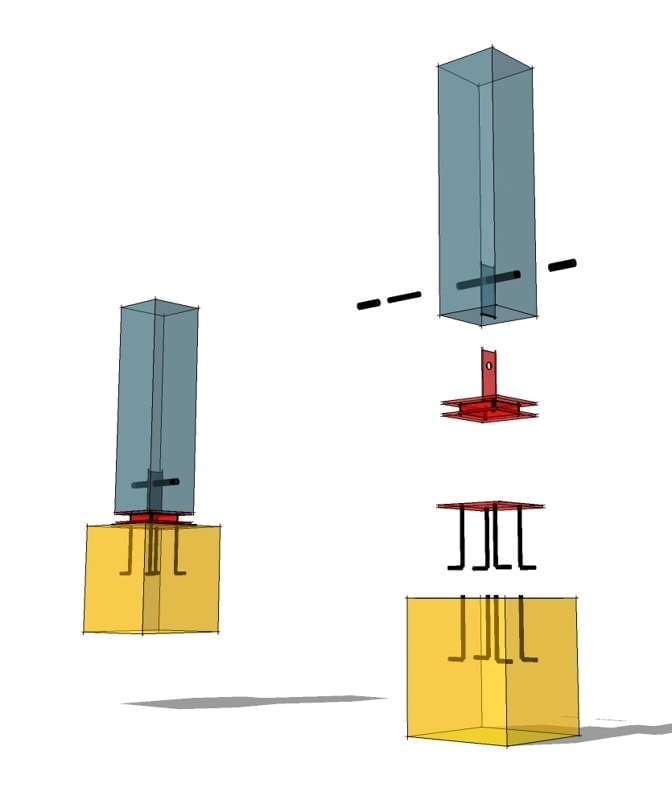
After you position the post on this cement footing, can you then place stone around the footing? How would you recommend capping off the stone? Would this be done just at the start of the wood post or above it?
Thanks!
It is best to start the stone cap as close to the bottom or right below the post to prevent the post from rotting. You can increase/decrease the depth of the spacer on the base to dial in the exact height that you need.
Do you have recommended sizes for the steel plate components for a 10×10 post? Do you have any CAD details you could email?
You can download a pdf of the detail at https://timberframehq.com/wp-content/uploads/2014/11/bolted-steel-knife-plate-b.pdf , we do not have the CAD file available for download. I would go with 3/16 or 1/4″ for the steel components depending on the other loads that maybe put it.
I am interested in the purchase of this product, Could you forward me information on procurement for a project I have in the works.
Thanks for your time
We do not provide this product, we instead recommend that you contact a local welding shop to fabricate them for you.
Brice, how do you make a cut that thin like this in the base of a post?
Josh
There are special slot mortisers, but I have always used a chainsaw. There are some jigs online that I have see to help with using a chainsaw.
For anything that you install inside the wood that is made out of steel I’d highly recommend giving it several coats of “Zinc it” or something similar that gives it a zinc coating to provide it with a durable rust inhibitor.
Tom, that is a great idea and one Brice also strongly recommends. Getting them hot-dipped galvanized is the way to go.
Awesome tip thanx. What material is the spacer made of?
A lexan product cut down to fit works the best.
In using a lexan spacer, the knife would need to be welded to the bottom plate and the spacer slotted to slide onto the knife. Is the top plate then welded to the knife or allowed to float on top of the lexan?
Knife plates were the plan when I built my 60×70 TF barn. I am in a 135mph coastal wind zone, so the plates had to act as uplift anchors, not just “support”. Since I wanted it built to residential standards, the engineer involved didn’t like knife plates because “there were no engineering specs” for them. So we went with timberlinx for the most part, except the 8 primary end posts which needed Simpsons brackets on both sides anchored to L bolts (also good for uplift, but in this case also needed for shear purposes…also ugly). Sad drawback turned out to be inability of timberlinx to prevent twisting of SYP post throughout the barn, since they have no “blocking” effect, and posts were 14 feet tall to loft floor. If we’d known before hand the posts were going to turn so badly, it could have been prevented with additional anchor pins under the posts…..or, of course, knife blade anchors. Didn’t want a lot of hardware showing, so the timberlinx seemed a good plan, until too late. How do you get engineering specs on knife blades, if they all seem to be DIY? I’m sure they would provided the uplift resistance needed (with interior SS pin/anchor rebar), but had to satisfy inspectors/engineers. Yeah, I know, don’t use SYP.
BTW….we used 1 inch thick black HDPE pads for concrete to post spacers below…looks good, satisfy all engineering and durability needs. Not sure they’d be good with UV if exposed to sunlight all the time. You can buy 4’x4′ sheets any thickness, and easily cut your own spacers to suit the post, protect from any foreseeable water rot issues. Easy, like circular or table saw. Not sure Lexan and HDPE are the same thing.